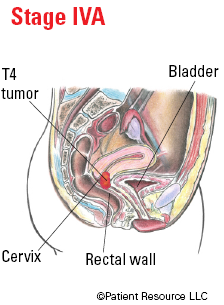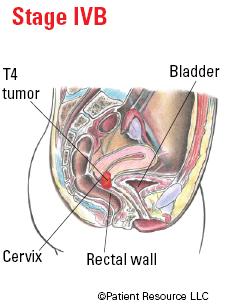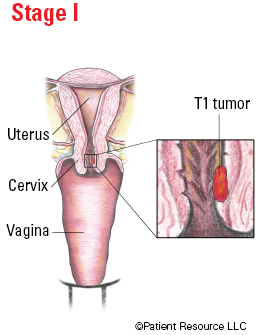
The tumor is confined to the cervix.
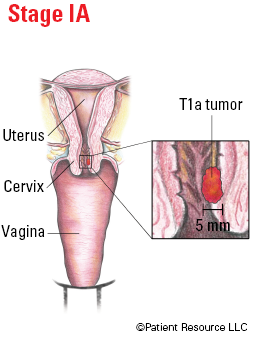
The tumor is not more than 5 mm in depth and is confined to the cervix.
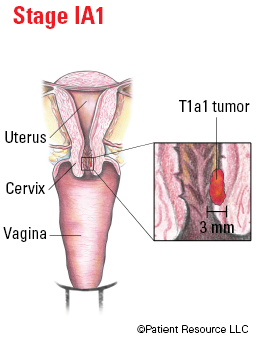
The tumor is not more than 3 mm in depth and is confined to the cervix.
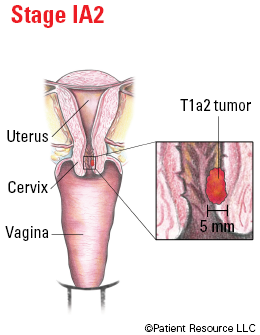
The tumor is more than 3 mm but not more than 5 mm in depth and is confined to the cervix.
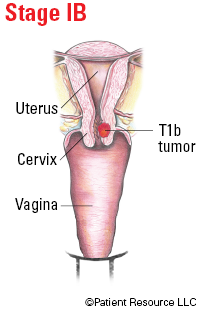
The tumor is measured as its deepest invasion of more than 5 mm. The lesion is limited to the cervix with size measured by the maximum tumor diameter.
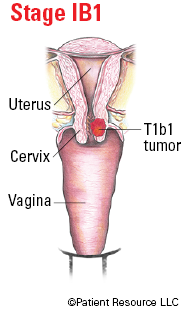
The tumor is more than 5 mm in depth but not more than 2 cm in greatest dimension and is confined to the cervix.
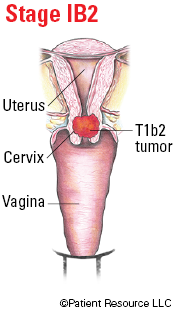
The tumor is more than 2 cm but is not more than 4 cm in greatest dimension and is confined to the cervix.
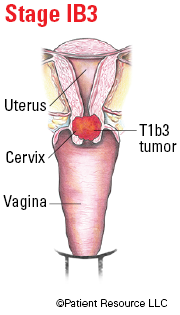
The tumor is more than 4 cm and is confined to the cervix.
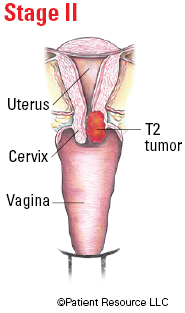
The tumor has spread beyond the uterus but not to the pelvic wall or lower third of the vagina.
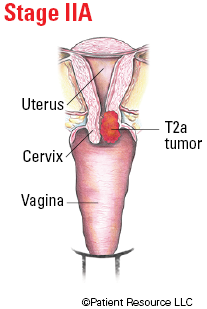
The tumor has spread beyond the uterus but is limited to the upper two-thirds of the vagina and has not invaded the parametrium (layer of tissue that separates the cervix from the bladder).
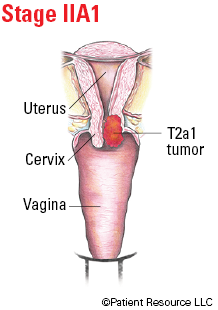
The tumor is not more than 4 cm and has spread beyond the uterus but is limited to the upper two-thirds of the vagina and has not spread to the parametrium (layer of tissue that
separates the cervix from the bladder).
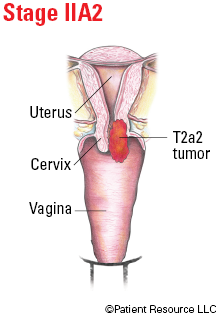
The tumor is more than 4 cm and has spread beyond the uterus but is limited to the upper two-thirds of the vagina and has not spread to the parametrium (layer of tissue that separates the cervix from the bladder).
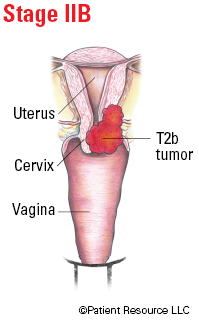
The tumor has spread to the parametrium (layer of tissue that separates the cervix from the bladder) but not up to the pelvic wall.
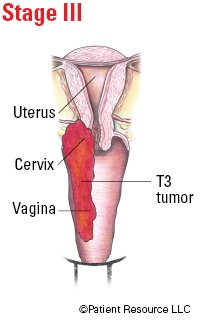
The tumor has spread to the lower third of the vagina and/or the pelvic wall and/or is causing one or both kidneys to swell or not function.
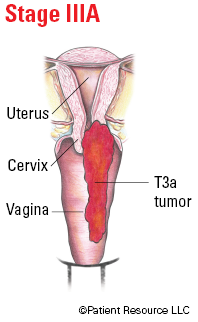
The tumor has spread to the lower third of the vagina but has not reached the pelvic wall.
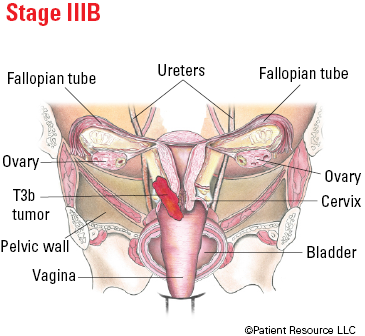
The tumor has spread to the pelvic wall and/or is causing one or both kidneys to swell or not function.
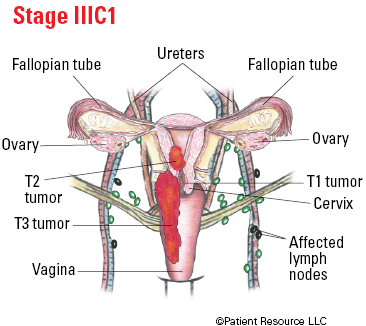
The tumor may not have been assessed (TX), or there’s no evidence of a primary tumor (T0), or the tumor may be confined to the cervix (T1), or the tumor has spread beyond the uterus but has not spread to the pelvic wall or lower third of the vagina (T2), or the tumor has spread to the lower third of the vagina and/or the pelvic wall and/or is causing one or both kidneys to swell or not function (T3); and has spread to the pelvic lymph nodes.
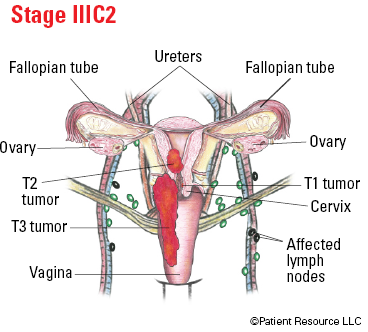
The tumor may not have been assessed (TX), or there’s no evidence of a primary tumor (T0), or the tumor may be confined to the cervix (T1), or the tumor has spread beyond the uterus but has not spread to the pelvic wall or lower third of the vagina (T2), or the tumor has spread to the lower third of the vagina and/or the pelvic wall and/or is causing one or both kidneys to swell or not function (T3); and has spread to the para-aortic lymph nodes, with or without positive pelvic lymph nodes.


















